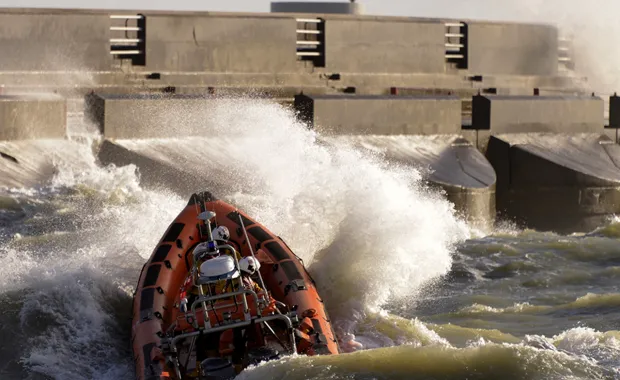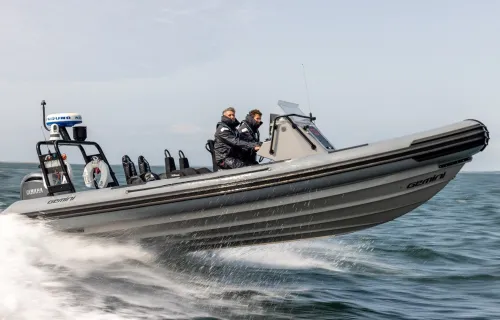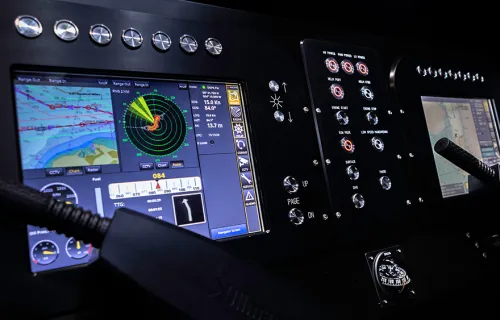CGI helped develop the Generic Vehicle Architecture (GVA), an open architecture approach to land platform design and integration that pays particular regard to platform infrastructure and the associated Human Machine Interface (HMI).
CGI delivered the first implementation of the GVA in the RNLI’s Shannon Class lifeboat, using the CGI Electronic Architecture Framework (SEAF). This work has resulted in the development of CGI OpenSea360, a mini-ECDIS navigation and platform management system specifically designed for permanent or semi-permanent deployment in small, open craft such as RHIBs.
CGI OpenSea360 is a scalable, open-architecture solution that supports integration with platform systems including sensors (e.g. radar and EO/ IR devices), effectors (e.g. remotely controlled systems) and communications (e.g. VHF, UHF, Satcom etc). The standards-based open architecture enables affordable ownership of a capability that can be continually adapted to maintain or extend the military advantage.
Key Areas of Provision
- Platform Management
-
The RNLI Shannon Lifeboat is a world-leading Search and Rescue capability. We developed a platform management system that enables the craft to be operated at the very edge of its performance whilst protecting crew and maximising endurance. A crew of 6 operate this 14m platform from the safety of their shock-mitigating seating. Role-specific user interfaces enable each crew member to play their part, bringing together 500+ pieces of information from the boats’ 14 major sub-systems, including navigational situational awareness, operation of radio communications, switchboard, fuel system, cascading alarms and more. Platform data is stored to enable post-mission analysis and the predicted condition-based maintenance of the fleet.
- High-Speed Assault Navigation
-
Less is sometimes more: a rigorous scientific investigation of the information needs of the assault craft navigator and helmsman has resulted in the design and delivery of user interfaces that deliver exactly the right information at the right time to enable faultless pilotage in the most demanding circumstances. When coupled with crew work-flows, rugged control devices and innovative screen navigation techniques, the CGI High-Speed Navigation system enables optimum platform performance. High speed on flat water is one thing, but maintaining operational tempo in wind-swept open water is another. Experimentation involving frontline assault navigators revealed how our system enabled full route planning and high-speed pilotage at 35 knots in a sea state-4 without the loss of navigational or tactical situational awareness. Careful selection of computing platforms and the production of highly performant software delivers imperceptible latency. You see where you are, and know where you will be, not just where you were.






